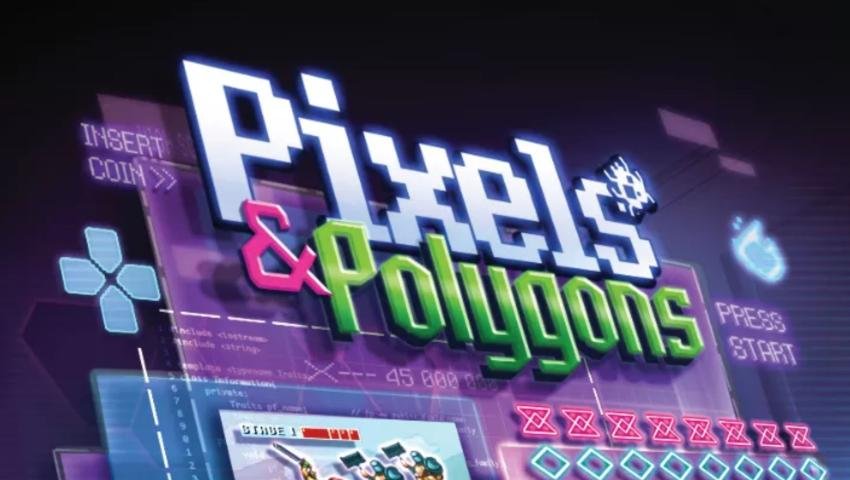
Pixels & Polygons: The Beautiful Chaos of 2D & 3D Game Development
2D and 3D game development turn creative ideas into playable experiences. 2D games focus on simplicity and fast prototyping using flat graphics and sprites, while 3D games bring depth and realism with modeling, animation, and immersive environments.
Pixels & Polygons: The Beautiful Chaos of 2D & 3D Game Development
This isn’t just code and graphics — it’s sweat, bugs, and the wild joy of building worlds from scratch.
This isn’t a hobby. It’s an emotional rollercoaster where the tracks aren’t finished yet.
If you’re thinking about building your own game — whether it's a cozy little 2D side-scroller or a full-blown 3D world with physics, lighting, and NPCs that scream when you bump into them — you’re stepping into a space that’s equal parts magical, maddening, and straight-up addictive.
This isn’t a tutorial. This isn’t a sales pitch.
This is the real talk no one gives you before you dive in.
So You Want to Make a Game? Cool. Now Prepare to Suffer (Lovingly)
Game dev looks glamorous from the outside. You see all those slick trailers, beautiful art, and cool mechanics, and you think, “Damn, I want to make that.”
But here’s the reality: behind every polished game is a graveyard of bugs, broken builds, feature creep, lost sleep, and a dev (or team of devs) clinging to sanity by a thread.
And still — we love it.
Why? Because building a game means building a world . Not just designing it — bringing it to life . That’s powerful. That’s what keeps us going.
The Big Divide: 2D vs. 3D
Let’s break this down without the Wikipedia tone.
2D Game Dev: Where Most People Start (and Stay, Because It’s Awesome)
2D games are the heart of indie dev. Why? Because they’re approachable, expressive, and insanely versatile . Think Stardew Valley , Celeste , Undertale — small teams (sometimes one person!) making magic with pixels.
Here’s the deal with 2D:
- You’re working in flat land — just X and Y. Like sketching something on paper—and then watching it move and breathe
- Art is made with sprites (think digital stickers).
- Animation = drawing the same thing over and over again, but slightly different each time. Tedious? Yes. Rewarding? Also yes.
- Your biggest weapon is style.If the vibe is right, even a basic 2D game can punch you right in the feels.
But don’t be fooled — 2D doesn’t mean “easy.” If you’ve ever tried animating a pixel walk cycle or building satisfying movement mechanics, you know. It’s an art form.
3D Game Dev: Where Things Get Wild
3D games are where everything expands: space, complexity, and scope. Think GTA , Elden Ring , Fortnite , Minecraft . You’re not just designing characters — you’re designing entire worlds people can move through in all directions.
With 3D, you’re juggling:
- Models, textures, and lighting
- Physics and gravity that behave like reality (except when they don’t)
- Cameras that decide whether your game feels smooth… or nausea-inducing
- Skeletons and rigs (yep, your characters need digital bones)
- AI that does more than just run straight into a wall
It’s deep. It’s messy. But when it works? Ohhh, it’s so worth it.
It’s Not Just About Tools — It’s About Guts
Sure, there’s Unity, Unreal, Godot, GameMaker, Construct, RPG Maker, blah blah blah. Tools matter, yes. You could have the best tools on Earth—but if you don’t finish what you start, none of it matters.
If you can’t deal with things breaking, art looking weird, or ideas not translating from brain to screen — you’re gonna hate it.
Game dev is emotional. You’ll love your project one day, hate it the next, consider quitting entirely by Friday, then get a brilliant idea at 2 a.m. that makes you fall in love all over again.
Common Pitfalls (Aka Mistakes We All Make)
Let’s just say it out loud so you don’t feel alone when it happens:
- Scope creep. Your simple game idea suddenly needs multiplayer, crafting, weather systems, and an economy. Stop. Chill. Keep it small.
- Too many features, not enough finish. You build systems, not polish. Your game becomes a buggy prototype buffet.
- You never finish. This one hurts. Most indie games die in development. Not because the idea sucked — but because you didn’t finish .
- Comparison syndrome. You see other people posting perfect dev logs, beautiful screenshots, and you think, “Why does my game look like trash?”It only looks like they’ve got it all figured out—you’re just seeing their highlight reel while you’re living your behind-the-scenes.
The Secret Sauce: Emotion
Want to know the difference between a forgettable game and one that sticks in your chest for years?
It’s emotion.
Whether it’s in the story, the art, the music, the gameplay feel — you need to make people feel something . That’s what makes them keep playing. That’s what makes them remember it long after the credits roll.
Doesn’t matter if it’s 2D or 3D. If it’s honest and it resonates, it works.
Final Thoughts: Build Something. Anything.
If you’ve got a game idea in your head, don’t wait for permission. Stop waiting for the perfect moment — just dive in and figure it out as you go. Just start. Make something small. Messy. Playable.
Because the truth is: game development isn’t about perfection.
It’s about finishing. About pushing through. About making people feel something in a world you built from nothing.
And if that sounds like your kind of chaos?
Welcome to game dev. You’re going to love it here.
Rukhsar Jutt
Leave a comment
Your email address will not be published. Required fields are marked *

